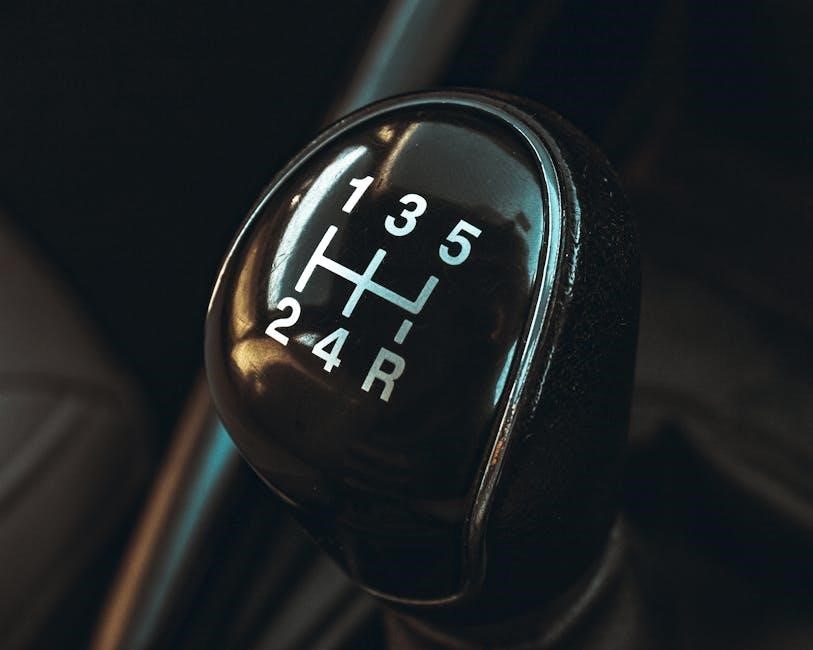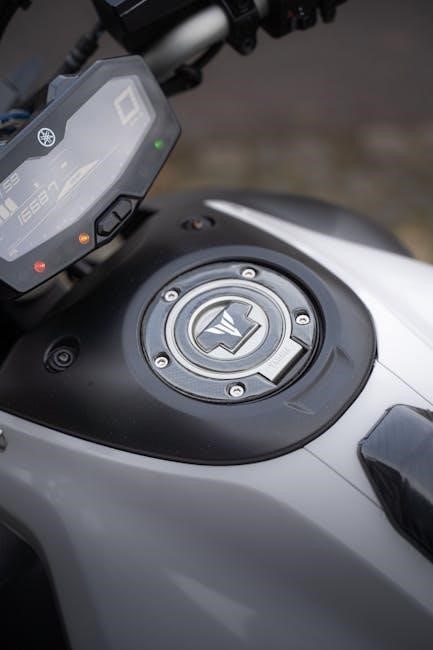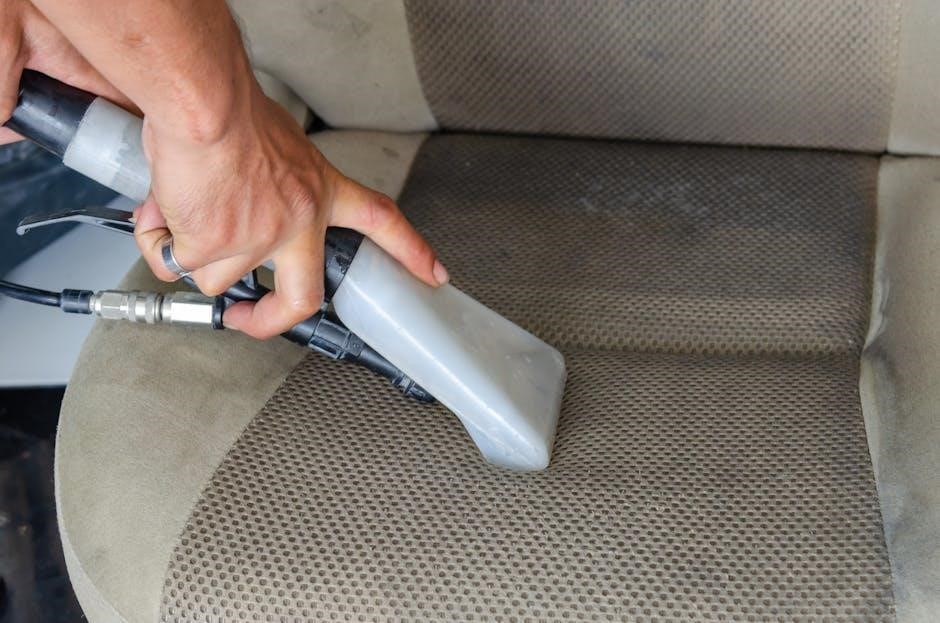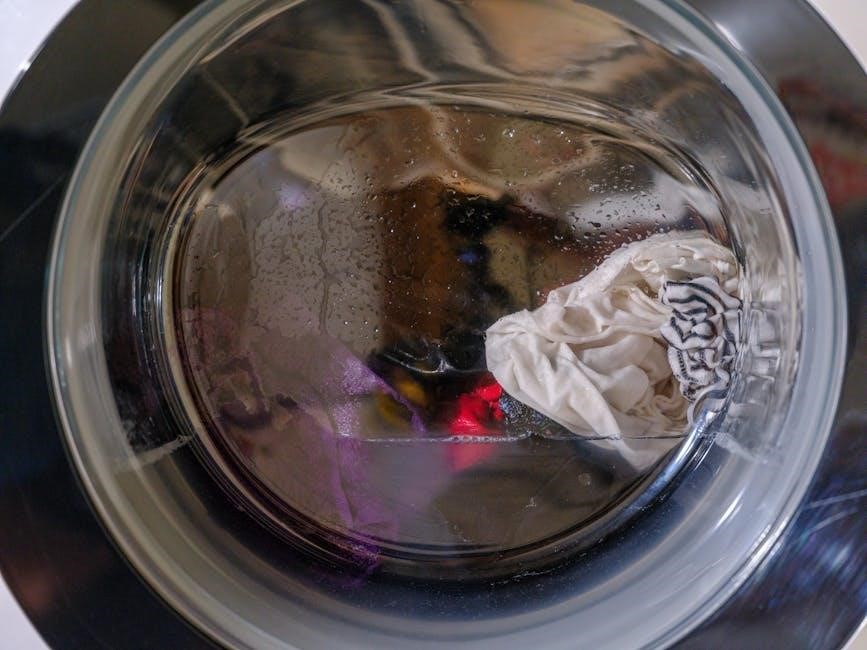Speed Queen washing machines are renowned for their durability and reliability. This manual provides comprehensive troubleshooting guidance, helping users identify and resolve common issues efficiently. Proper maintenance and timely repairs ensure optimal performance and extend the lifespan of your appliance. By following the detailed instructions and safety precautions outlined in this guide, you can address problems confidently and keep your Speed Queen washer functioning at its best.
1.1 History of Speed Queen Washing Machines
Speed Queen washing machines have a rich history dating back to their founding, with a legacy built on durability and reliability. Established over a century ago, the brand has evolved from basic, manually operated washers to advanced, technology-driven appliances. Known for their robust construction, Speed Queen machines are trusted by both homeowners and commercial laundry operators worldwide. Their commitment to innovation has led to the development of energy-efficient models and user-friendly designs. The brand’s reputation for producing long-lasting washing machines has solidified its position as a leader in the laundry industry. Today, Speed Queen continues to prioritize quality and customer satisfaction, offering a range of products tailored to meet the needs of modern users while maintaining their timeless reliability.
1.2 Purpose of the Troubleshooting Manual
This manual serves as a comprehensive guide to addressing common issues with Speed Queen washing machines. Its purpose is to empower users with the knowledge to diagnose and resolve problems independently, minimizing downtime and the need for professional assistance. By providing clear, step-by-step instructions and practical solutions, the manual aims to enhance user confidence and ensure optimal appliance performance. Whether dealing with operational malfunctions or error codes, this resource offers accessible information to help users maintain their Speed Queen washer effectively. The manual emphasizes safety, proper maintenance, and efficient troubleshooting techniques, making it an essential tool for both new and experienced users seeking to prolong the life of their machine and address challenges promptly and effectively.

Common Issues with Speed Queen Washing Machines
Common issues include the washer not turning on, failing to spin or agitate, leaking water, producing excessive noise, or not draining properly; These problems often stem from power issues, faulty parts, or improper maintenance. Diagnosing and addressing these issues promptly can prevent further damage and ensure efficient operation. Regular checks and timely repairs are essential for maintaining performance and longevity.
2.1 Washer Not Turning On
If your Speed Queen washing machine won’t turn on, start by checking the power supply. Ensure the machine is properly plugged into a working outlet and that no fuses are blown or circuit breakers tripped. Verify that the power cord is undamaged and securely connected. Next, check if the child lock feature is activated, as this can prevent the washer from starting. If the issue persists, inspect the control panel for any malfunctioning buttons or touch screen responsiveness. Resetting the machine by unplugging it for a few minutes may resolve internal electrical glitches. If none of these steps work, there could be an internal fault requiring professional attention. Always prioritize safety by unplugging the washer before attempting repairs.
2.2 Washer Not Spinning or Agitating
If your Speed Queen washing machine isn’t spinning or agitating, begin by ensuring the load is balanced and not overloaded. An unbalanced load can cause the washer to limit spin speed to prevent damage. Next, verify the power supply is stable and the machine is properly plugged in. Check the circuit breaker or fuse box to ensure no issues there. Inspect the control panel for malfunctioning buttons or an unresponsive touch screen. Resetting the machine by unplugging it for a few minutes may resolve internal glitches. If the problem persists, examine the lid switch functionality, as a faulty switch can prevent spinning. Also, ensure the drain hose is clear and the drain pump filter is clean. If none of these steps resolve the issue, consider consulting the troubleshooting manual or contacting a professional for assistance.
2.3 Washer Leaking Water
If your Speed Queen washing machine is leaking water, start by turning off the power and water supply to ensure safety. Inspect the water inlet hoses for loose connections or cracks, and replace them if necessary. Check the tub seal for signs of wear or damage, as this is a common source of leaks. Additionally, inspect the drain pump filter and hose for blockages or kinks, which can cause water to leak during the drain cycle. Ensure the washer is properly leveled, as an unbalanced machine can lead to excessive water leakage. If the leak persists, consult the troubleshooting manual for specific guidance or contact a professional to diagnose and repair internal components such as the water pump or tub seal.

2.4 Excessive Noise or Vibration
If your Speed Queen washing machine is producing excessive noise or vibration, start by ensuring the load is balanced. An uneven distribution of laundry can cause the machine to vibrate excessively. Check for loose internal components, such as the tub bearings or shock absorbers, which may need tightening or replacement. Inspect the drain pump for blockages, as debris can cause unusual noises. Ensure the washer is properly leveled, as an unbalanced machine can amplify vibrations. If the issue persists, consult the troubleshooting manual for guidance on diagnosing internal malfunctions. In some cases, excessive noise may indicate worn-out parts, such as the belt or motor mounts, which require professional attention. Always unplug the machine before performing internal inspections or repairs.
2.5 Washer Not Draining Properly
If your Speed Queen washing machine is not draining properly, start by checking the drain pump filter for blockages. Remove and clean the filter to ensure water flows freely. Inspect the drain hose for kinks or clogs, and verify that it is securely connected to both the washer and the drainpipe. If the issue persists, check for any debris or lint buildup in the pump. In some cases, excessive detergent residue or foreign objects in the washer can obstruct drainage. Ensure the washer is on a level surface and that the drain system is functioning correctly. If the problem continues, consult the troubleshooting manual for guidance on diagnosing internal components like the drain pump motor or faulty sensors. Always unplug the machine before attempting any internal repairs to avoid safety hazards.

Understanding and Fixing Error Codes
Speed Queen washing machines use specific error codes to indicate issues. Common codes like E.dL or L1 signal problems such as drainage issues or sensor malfunctions. Always consult the manual to identify the code meaning and follow the recommended troubleshooting steps. Resetting the machine or checking sensors often resolves errors. For persistent issues, contact a professional to avoid further damage.
3.1 Understanding the Error Code System
Speed Queen washing machines utilize an error code system to communicate specific issues. These codes, such as E.dL, L1, or SR, appear on the display to indicate problems like drainage issues, sensor malfunctions, or imbalanced loads. Understanding these codes is essential for effective troubleshooting. Refer to the user manual or the manufacturer’s guide to interpret each code accurately. Common codes often relate to issues like poor drainage, faulty sensors, or mechanical failures. Once identified, users can perform basic checks, such as ensuring proper drainage or resetting the machine. Advanced issues may require professional intervention to prevent further damage. Familiarizing yourself with the error code system helps diagnose and resolve problems efficiently, ensuring your Speed Queen washer operates smoothly and extends its lifespan.
3.2 Common Error Codes and Their Solutions
Speed Queen washing machines display error codes to indicate specific issues. Code E.dL often signifies a drainage problem, requiring users to check the drain hose and pump filter. Code L1 indicates a failed water level sensor, which may need replacement. Code SR points to issues with the spin or agitation function, often resolved by redistributing the laundry load. Code 29 typically relates to communication errors between the control board and other components, which may require professional servicing. For most codes, resetting the machine by unplugging it and waiting a few minutes can resolve minor glitches. Always refer to the troubleshooting manual for specific guidance. If issues persist, contacting a certified technician is recommended to prevent further damage and ensure proper repairs.
3.3 How to Reset Your Speed Queen Washing Machine
To reset your Speed Queen washing machine, start by unplugging it from the power outlet. Allow it to remain unplugged for at least 20 minutes to ensure all internal components are fully reset. After this period, plug the machine back in and run a short test cycle, such as a quick wash without any laundry, to check if the issue has been resolved. If the machine was connected through a circuit breaker, you may also reset the breaker as an alternative method. Always refer to the user manual for specific instructions, as different models might have varied reset procedures. If the problem persists after resetting, consider consulting the troubleshooting section or contacting a professional for further assistance.

Maintenance Tips to Prevent Issues
Regularly clean the washer drum, check hoses, and inspect gaskets to prevent leaks. Ensure balanced loads and avoid overloading to maintain optimal performance and longevity.
4.1 Importance of Regular Maintenance
Regular maintenance is crucial for ensuring the longevity and efficiency of your Speed Queen washing machine. By performing routine checks and cleaning, you can prevent common issues like mold buildup, clogged drains, and worn-out parts. This not only saves money on costly repairs but also maintains optimal performance. Proper maintenance ensures your washer operates safely and effectively, reducing the risk of unexpected breakdowns. Additionally, regular upkeep helps retain the machine’s value and extends its lifespan. Always refer to your user manual for specific maintenance recommendations tailored to your Speed Queen model.
4.2 Checking and Replacing Parts
Regularly inspecting and replacing worn or damaged parts is essential for maintaining your Speed Queen washing machine’s performance. Key components like the belt, gasket, and drain pump should be checked for signs of wear or damage. If you notice cracks in the belt or leaks from the gasket, replace them promptly to avoid further issues. The drain pump filter should also be cleaned regularly to prevent clogs. Refer to your user manual for guidance on locating and replacing these parts. Always use genuine Speed Queen replacement parts to ensure compatibility and longevity. If you’re unsure about any replacement process, consult a professional to avoid causing further damage to your machine.
4.3 Scheduling Professional Servicing
Scheduling professional servicing for your Speed Queen washing machine is crucial for maintaining its performance and longevity. Regular maintenance by certified technicians ensures that potential issues are identified and addressed before they escalate. It’s recommended to schedule servicing annually or as specified in your user manual. For complex problems or parts replacement, rely on authorized Speed Queen service providers who use genuine parts. Additionally, professional servicing can restore your washer to its optimal state after major repairs or prolonged inactivity. Always check reviews and certifications when selecting a technician to ensure quality service. Remember, timely professional intervention can prevent costly repairs and extend the lifespan of your appliance. Schedule your service today to maintain your Speed Queen washer’s reliability and efficiency.

Safety Precautions and Best Practices
Always unplug your Speed Queen washer before performing any repairs; Wear protective gloves and eyewear when handling internal components. Follow the manual’s safety guidelines to avoid injuries and ensure safe troubleshooting.

5.1 General Safety Tips for Appliance Repair
When troubleshooting or repairing your Speed Queen washing machine, always prioritize safety. Ensure the machine is unplugged from the power source before attempting any repairs. Allow the washer to cool down if it has been in use, as internal components may be hot. Wear protective gloves and eyewear to prevent injuries from sharp edges or debris. Never attempt repairs without consulting the official manual or guidance from a professional. Keep children and pets away from the work area. Avoid using unauthorized tools or methods, as this could damage the machine or cause harm. Always follow the manufacturer’s safety guidelines and precautions outlined in the troubleshooting manual. If unsure about a repair, consider contacting a certified technician to ensure safety and effectiveness.

5.2 What to Avoid When Troubleshooting
When troubleshooting your Speed Queen washing machine, avoid ignoring specific error codes like E dL, LD, SR, Ed, or L1, as these indicate specific issues requiring attention. Never skip basic checks, such as ensuring the machine is properly plugged in or checking for blown fuses. Avoid attempting repairs without consulting the official manual or expert guidance, as this can lead to further damage. Do not disregard safety precautions, such as unplugging the machine before starting repairs. Refrain from using unauthorized tools or methods, as they may void the warranty or compromise safety. Additionally, avoid overloading the machine or ignoring load balance issues, as this can cause persistent problems. By steering clear of these common pitfalls, you can ensure effective and safe troubleshooting for your Speed Queen washer.

5.3 Emergency Procedures
In case of an emergency with your Speed Queen washing machine, immediately disconnect the power supply by unplugging it or switching off the circuit breaker. If the machine is leaking excessively or making unusual noises, stop its operation and avoid further use until the issue is resolved. For error codes like E dL or LD, refer to the troubleshooting manual for specific guidance. Never attempt to bypass safety features or ignore warnings, as this could lead to further damage or safety hazards. If water overflow occurs, turn off the water supply valves and unplug the machine. Avoid using the washer if it’s malfunctioning, especially if it involves electrical or water-related issues. Contact a professional if you’re unsure about the repairs. Always prioritize safety and follow the manufacturer’s guidelines to prevent accidents and ensure effective resolution. Speed Queen’s customer support is also available for urgent assistance.

Advanced Troubleshooting Techniques
Advanced troubleshooting involves diagnosing internal components, running detailed diagnostic tests, and understanding when professional intervention is necessary to resolve complex issues efficiently and safely.
6.1 Identifying and Checking Internal Components
To effectively troubleshoot your Speed Queen washing machine, understanding its internal components is crucial. Start by locating the motor, drain pump, and control board, as these are common sources of issues. Visually inspect for signs of wear, damage, or blockages. Use a multimeter to test electrical connections and components for continuity or short circuits. Refer to the service manual for wiring diagrams and specific testing procedures. Pay attention to error codes, as they often point to specific malfunctions within these components. Regularly cleaning the drain pump and checking the motor belt for tension can prevent many issues. If a component is faulty, consider replacing it with genuine Speed Queen parts to ensure compatibility and reliability. Always unplug the machine before performing internal inspections to avoid accidents. If unsure, consult a professional to diagnose and repair complex internal issues safely and efficiently.
6.2 Running Diagnostic Tests
Running diagnostic tests on your Speed Queen washing machine is essential for identifying hidden issues. Start by accessing the diagnostic mode, typically done by pressing and holding specific buttons (refer to your manual). This mode tests critical components like the motor, drain pump, and valves. Monitor the machine’s behavior during the test cycle to spot irregularities. Check for error codes displayed, as they provide clues about specific malfunctions. If the machine vibrates excessively or makes unusual noises, note these observations. After the test, ensure all functions return to normal. If issues persist, consult the troubleshooting manual or contact a professional. Regular diagnostic checks can prevent minor problems from escalating into major repairs, ensuring your washer operates smoothly and efficiently over time. Always follow safety guidelines when performing these tests to avoid accidents or further damage.
6.3 Knowing When to Call a Professional
While many issues can be resolved through DIY troubleshooting, there are situations where professional intervention is necessary. If you encounter complex error codes or persistent mechanical failures, it’s best to contact a certified technician. Major components like the motor or control board often require specialized tools and expertise to repair. Additionally, if you’re unsure about your safety while performing repairs or if the issue poses a risk of further damage, seeking professional help is advisable. Leaks, electrical issues, or unusual noises that don’t resolve with basic troubleshooting also warrant expert attention. Remember, attempting advanced repairs without proper knowledge can lead to more severe problems or void your warranty. Always prioritize safety and the longevity of your appliance by knowing when to call a professional.
Regular maintenance and prompt troubleshooting ensure optimal performance. Refer to your manual for specific guidance and contact Speed Queen support for professional assistance when needed.
7.1 Summary of Key Troubleshooting Points
Troubleshooting your Speed Queen washing machine begins with identifying common issues like the washer not turning on, not spinning, or leaking water. Check power supply, circuit breakers, and fuses for non-starting issues. For spinning or agitation problems, ensure the load is balanced and the lid is closed properly. Leaks often stem from loose connections or worn seals, which should be tightened or replaced. Excessive noise may indicate unbalanced loads or faulty bearings. If the washer isn’t draining, inspect the drain pump filter and plumbing for blockages. Refer to error codes for specific diagnostics, such as E dL or LD, and follow reset procedures if needed. Regular maintenance, like cleaning filters and checking hoses, prevents many issues. Always consult the manual or contact Speed Queen support for complex repairs to ensure safety and effectiveness.
7.2 Final Tips for Maintaining Your Washer
Regularly cleaning the washer’s filters and hoses ensures optimal performance and prevents clogs. Always check for balanced loads and avoid overloading, as this can damage the machine. Using the correct detergent dosage is crucial to maintain efficiency. Schedule annual professional servicing to identify and address potential issues early. Refer to your user manual for specific maintenance recommendations tailored to your model. Ensure the washer is properly installed and leveled to prevent vibration and noise. Keep the exterior clean to maintain hygiene and aesthetics. For advanced models, check for software updates to enhance functionality. Lastly, avoid attempting complex repairs yourself and consult a professional for significant issues to ensure safety and longevity of your Speed Queen washer.
